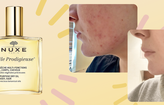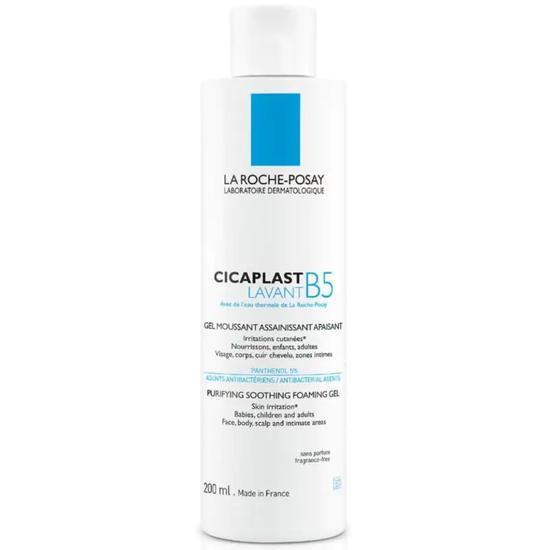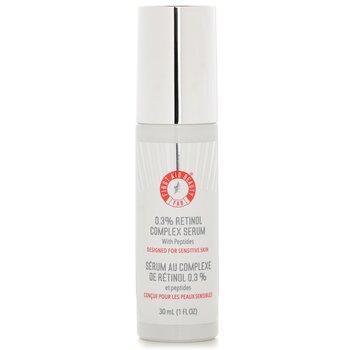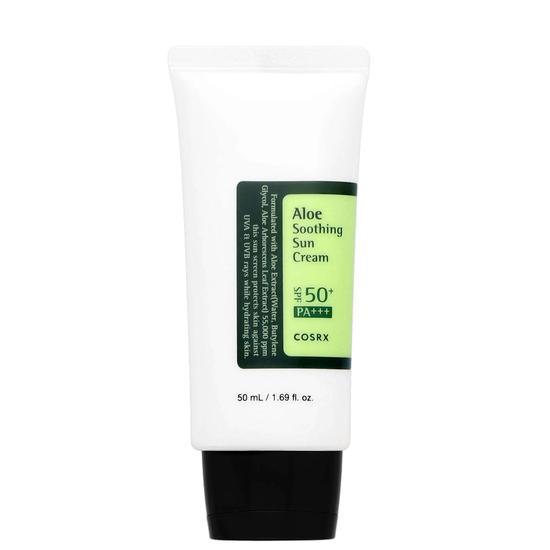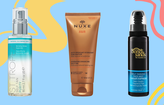
- Skin
- Salicylic Acid With Retinol
Can You Use Salicylic Acid With Retinol?
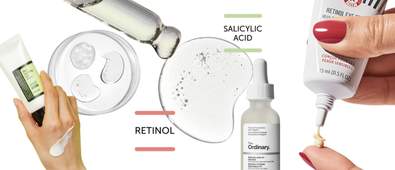
Powerful ingredients deliver powerful results, but can you have too much of a good thing?
Ask any skincare expert (us included) and they'll agree: layering skincare actives is a great way to get the most out of your skincare routine. It also gives you scope to make your routine a little more tailored to your personal needs.
For those with rougher, more aged or uneven skin, retinol is a godsend. For oily, acne-prone or congested skin, salicylic acid is your friend. But if you have overlaps, does it then stand to reason that you should incorporate both these actives into your routine?
Can you use salicylic acid with retinol?
Sometimes—with caution
This combination isn’t for everyone, but it can work with proper timing and formulation. Both salicylic acid and retinol exfoliate the skin, but salicylic acid targets clogged pores and oil, while retinol speeds up cell turnover. Used incorrectly, they can cause irritation—but when spaced out or layered carefully, they can improve acne, texture, and tone.
Understanding when and how to use each is key. Think of them as two powerful tools—not necessarily at the same time, but in the same kit.
👉 Already know the benefits of each ingredient?
Jump To Routine
What Does Salicylic Acid Do For Skin?
Salicylic acid is a beta-hydroxy acid (BHA) prized for its ability to exfoliate deep inside the pores. Unlike surface exfoliants, it’s oil-soluble, allowing it to penetrate clogged follicles, break down sebum, and reduce acne-causing congestion.
Often found in products for acne-prone or oily skin, salicylic acid also has anti-inflammatory properties, making it effective against blackheads, whiteheads, and mild breakouts. With consistent use, it helps refine texture, clear blemishes, and smooth out rough or bumpy areas.
Key Benefits Of Salicylic Acid Include:
- Deep Pore Exfoliation: As a beta hydroxy acid (BHA), it penetrates oil and unclogs pores, reducing blackheads and congestion.
- Targets Acne: With antibacterial and anti-inflammatory action, it helps reduce breakouts and prevent new ones from forming.
- Improves Texture: Smooths rough, bumpy skin and enhances clarity.
- Oil Control: Regulates sebum production, making it effective for oily and combination skin.
- Reduces Redness: Helps calm active acne flare-ups and inflammation.
- Preps Skin for Actives: Gently exfoliates, allowing deeper penetration of subsequent skincare ingredients.
(Source: Cleveland Clinic, Wikipedia)
Salicylic Acid: Best For Oily, Congested, Or Breakout-Prone Skin
Oily and Acne-Prone Skin: Deeply exfoliates inside pores, helping to clear blackheads, whiteheads, and reduce breakouts.
Normal to Combination Skin: Use 2–3 times a week to maintain clear pores and even texture.
Dry or Sensitive Skin: Can be drying or irritating—opt for low concentrations and avoid daily use. Pair with soothing ingredients like panthenol or niacinamide.
What Does Retinol Do For Skin?
Retinol, often hailed as a gold-standard anti-ageing ingredient, promotes cell turnover and enhances skin regeneration. This leads to smoother texture, reduced appearance of fine lines and wrinkles, and a clearer, more even skin tone. It also helps unclog pores, making it effective against acne.
By stimulating collagen production, retinol supports firmer, plumper skin over time. However, because it’s such an active compound, it can initially cause dryness, redness, or peeling—especially when combined with other exfoliants or used too frequently. Starting with a low concentration and pairing it with calming or hydrating ingredients (like azelaic acid or hyaluronic acid) can help ease the transition.
Key Benefits Of Retinol Include:
- Boosts Cell Turnover: Speeds up the rate at which skin renews itself, helping to shed dead cells and reveal smoother, healthier skin beneath.
- Reduces Fine Lines and Wrinkles: Stimulates collagen production, softening the appearance of existing wrinkles and preventing new ones from forming.
- Clears Acne: Helps prevent clogged pores, reduces breakouts, and treats existing blemishes by normalising skin cell behaviour.
- Evens Skin Tone: Fades dark spots, sun damage, and post-acne hyperpigmentation for a more uniform complexion.
- Improves Texture: Refines rough patches and smooths out uneven or bumpy areas with consistent use.
- Enhances Firmness and Elasticity: Promotes collagen and elastin synthesis, helping skin appear firmer and more youthful over time.
(Source: Cleveland Clinic)
Retinol: Powerful But Needs Tailoring By Skin Type
Normal to Dry Skin: Gradually introduce retinol and pair it with hydrating ingredients, such as hyaluronic acid, to reduce dryness and sensitivity.
Oily and Acne-Prone Skin: Highly beneficial due to its exfoliating properties, helping to manage oiliness and reduce blemishes.
Sensitive Skin: Start slowly with a lower concentration, initially applying only a few times a week to minimise irritation. Buffer with moisturiser.
Mature Skin: Great for improving fine lines, firmness, and sun damage—build up use slowly for long-term results.
How Can Salicylic Acid And Retinol Work Well Together (With Caution)?
Salicylic acid and retinol can be an effective combination for treating acne, oiliness, and texture—but they require careful application to avoid irritation. Retinol works by encouraging cell turnover and unclogging pores from within, while salicylic acid (a beta-hydroxy acid) exfoliates deep inside the pores, targeting excess oil and preventing breakouts.
Because both are powerful exfoliants, using them simultaneously can overwhelm the skin barrier, leading to dryness, flaking, or inflammation. However, when introduced gradually or used on alternate days, this duo can dramatically improve congested, acne-prone skin and smooth uneven texture.
The key to success? Spacing applications, using hydrating products in between and avoiding high concentrations until your skin builds tolerance.
Comparing Salicylic Acid And Retinol Side-By-Side
| Benefit | Salicylic Acid | Retinol |
|---|---|---|
| Primary Function | ✅ Exfoliates inside pores | ✅ Increases skin cell turnover |
| Reduces Fine Lines/Wrinkles | ❌ Minimal effect | ✅ Highly effective |
| Improves Skin Texture | ✅ Smooths rough texture | ✅ Significantly smooths |
| Fades Hyperpigmentation | ✅ Mild fading with continued use | ✅ Strongly effective |
| Treats Acne & Blemishes | ✅ Very effective for breakouts | ✅ Effective by unclogging pores |
| Enhances Skin Firmness | ❌ Limited firming | ✅ Boosts collagen, improves elasticity |
| Boosts Hydration | ❌ Can be drying | ❌ Can cause dryness |
| Improves Skin Barrier | ⚠️ Can disrupt if overused | ❌ May weaken initially |
| Potential Irritation | ⚠️ Can cause dryness or stinging | ⚠️ Peeling, redness possible |
| Suitable for Sensitive Skin | ⚠️ Use sparingly | ⚠️ Use with caution |
Retinol Also Works Well With:
Niacinamide – Reduces irritation and enhances skin’s resilience, making retinol easier to tolerate.
Peptides – Support skin repair and collagen production while minimising inflammation.
Hyaluronic Acid – Provides moisture and plumping to counteract dryness and peeling associated with retinol use.
Salicylic Acid Also Works Well With:
Green Tea Extract – Adds antioxidant protection and reduces inflammation, enhancing acne-fighting benefits.
Clay Masks – Absorb excess oil and enhance pore-clearing benefits when used weekly with salicylic acid.
Niacinamide – Calms and balances skin after exfoliation, particularly useful in oily or breakout-prone routines.
How To Apply Salicylic Acid And Retinol Together
- Start with a gentle cleanse, avoiding scrubs or physical exfoliants.
- Apply salicylic acid at night, on alternate evenings to retinol—do not layer them directly unless advised by a professional.
- On retinol nights, apply it to dry skin and let it absorb.
- Always follow with a hydrating, barrier-supportive moisturiser.
- Daily SPF is essential, as both ingredients increase photosensitivity.
FAQs
What are the differences between salicylic acid and retinol?
Salicylic acid is a BHA that exfoliates inside pores to clear oil and debris—ideal for acne-prone skin. Retinol promotes cell turnover and collagen synthesis, addressing signs of ageing and improving texture. Salicylic acid works superficially and within pores, whereas retinol operates deeper to renew skin cells.
Which goes first: retinol or salicylic acid?
If using in the same routine (not recommended for beginners), apply salicylic acid first after cleansing. Let it absorb fully, then follow with retinol. But again, spacing them out is safest.
Who should avoid this combo?
If you have rosacea, eczema, or extremely sensitive skin, skip this duo or consult a dermatologist first—they can cause peeling or flare-ups when combined.
When using any form of AHA or BHA, caution is advised--particularly for more sensitive skin types. Our go-to tips are to start slowly: alternate nights and start with lower concentrations. You can find out more by rea.ding our post on finding and using The Best Chemical Exfoliators for Soft, Smooth Skin. Cosmetify stocks a range of great brands that specify skincare concentrations, such as The Ordinary (check out our post Everything You Need to Know About The Ordinary).
Do not layer exfoliating acids with other strong ingredients like retinol or benzoyl peroxide: if you're looking to reap the benefits of two strong, again, alternate nights and take breaks as and when needed.

Written by Maria Mukaranda
Maria’s background is rooted primarily in creative media and a love for all things written, expressed through experience both online and in print; for creative platforms spanning from music to fashion to beauty.
Top Posts

